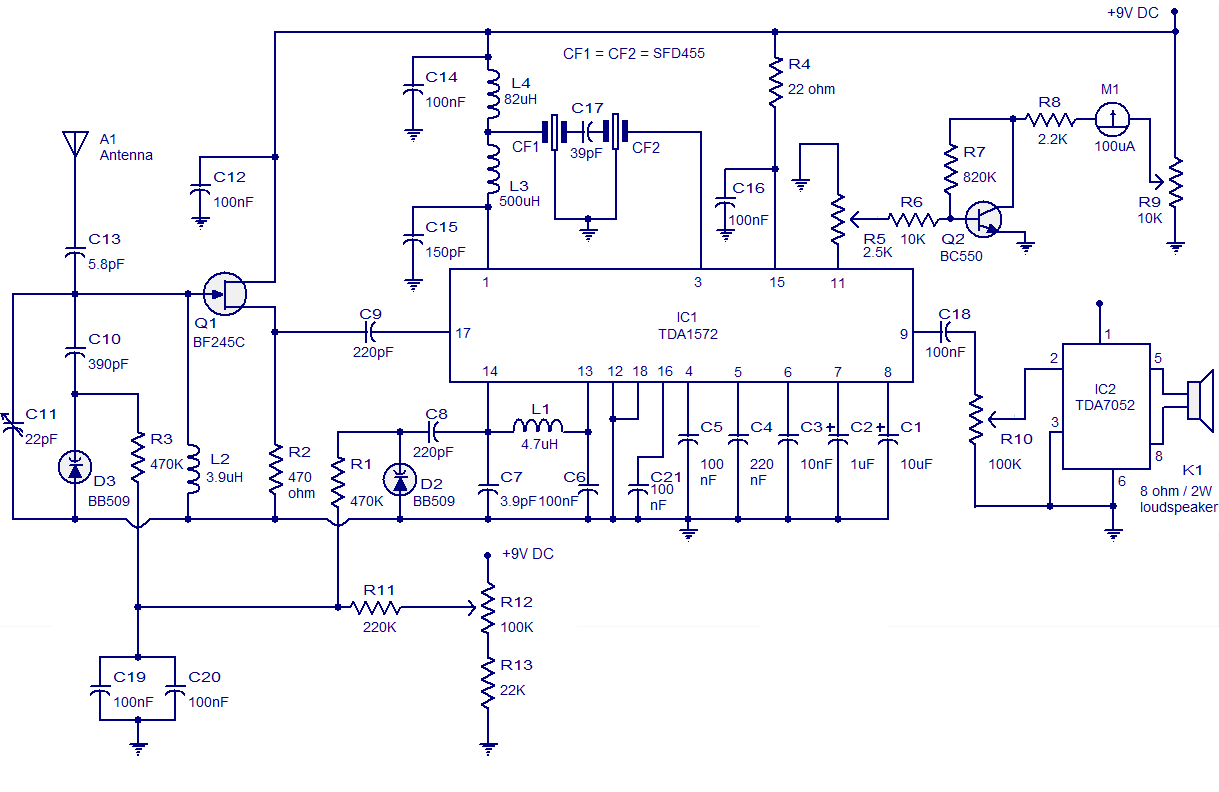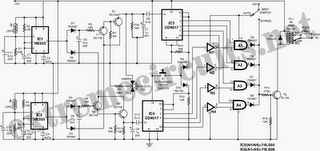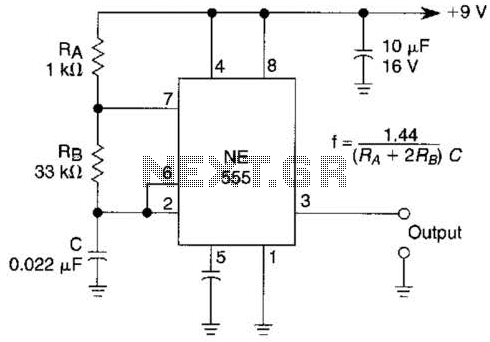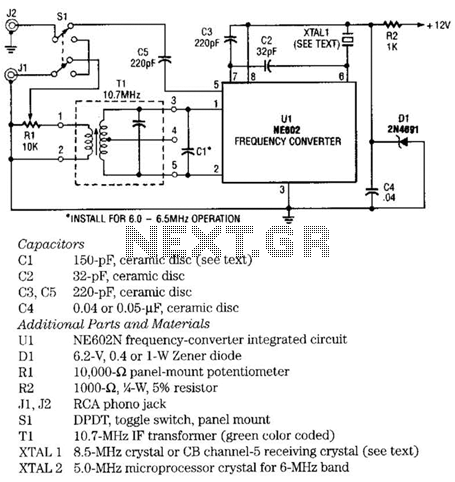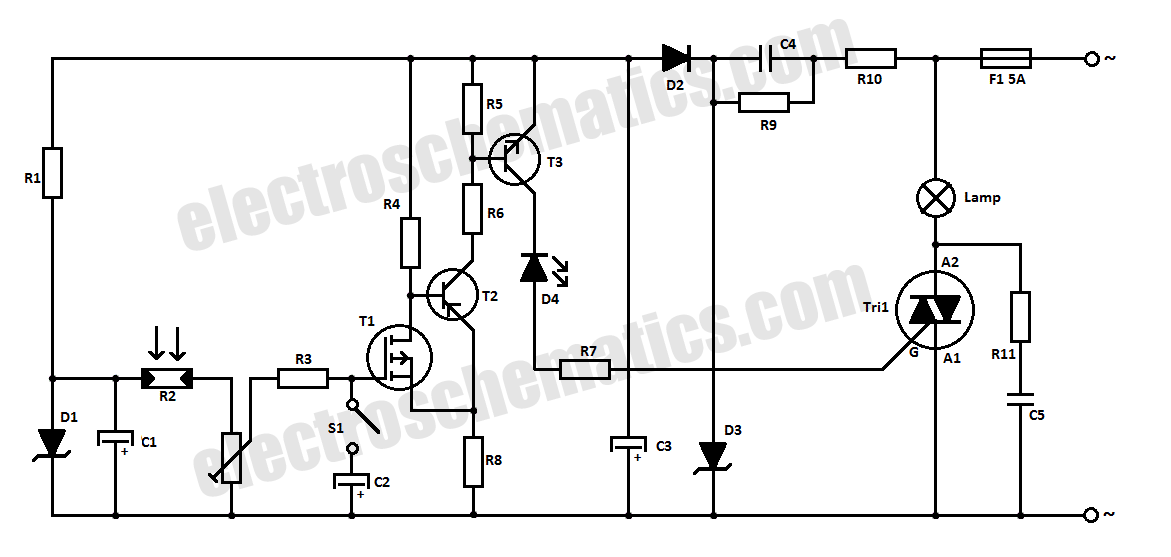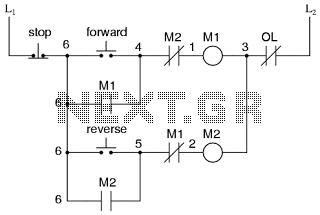
Nanoampere sensing circuit
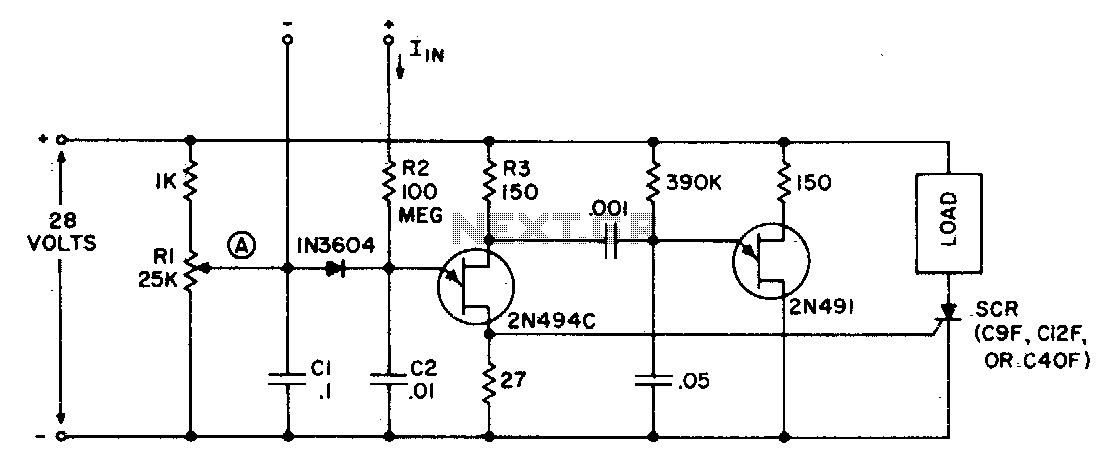
The circuit can function as a sensitive current detector or a voltage detector with high input impedance. Resistor Rl is configured so that the voltage at point (A) is V2 to a few volts below the threshold that activates the 2N494C transistor. A small input current (Iin) of merely 40 nanoamperes will charge capacitor C2, elevating the voltage at the emitter to the activation level. When the 2N494C is activated, both capacitors, Cl and C2, discharge through the 27-ohm resistor, producing a positive pulse with sufficient amplitude to trigger a controlled rectifier (SCR) or other pulse-sensitive circuitry.
The described circuit operates effectively as a highly sensitive detection system for either current or voltage, leveraging the properties of the 2N494C transistor, which is well-regarded for its low threshold activation. The configuration of resistor Rl is critical, as it dictates the voltage at point (A), ensuring it remains slightly below the activation level of the transistor, thus allowing for precision in detection.
The input current (Iin), specified at 40 nanoamperes, is notably low, making this circuit suitable for applications where minimal current draw is essential, such as in sensor applications or low-power devices. The charging of capacitor C2 is crucial, as it serves to buffer the input signal, allowing the circuit to respond effectively to minute changes in current or voltage.
Upon activation of the 2N494C, the discharge of capacitors Cl and C2 through the 27-ohm resistor generates a sharp positive pulse. This pulse is significant as it can be utilized to trigger other components within a system, such as a controlled rectifier (SCR), which is often used in power control applications. The design ensures that the pulse generated is of sufficient amplitude to reliably activate subsequent circuitry, thereby enhancing the versatility of the circuit in various electronic applications.
Overall, this circuit exemplifies a robust design for sensitive detection applications, combining low power requirements with the ability to interface effectively with other electronic components through pulse generation.The circuit may be used as a sensitive current detector or as a voltage detector having high input impedance. Rl is set so that the voltage at point (A) is V2 to % volts below the level that fires the 2N494C. A small input current (Iin) of only 40 nanoamperes will charge C2 and raise the voltage at the emitter to the firing level
When the 2N494C fires, both capacitors, Cl and C2, are discharged through the 27 ohm resistor, which generates a positive pulse with sufficient amplitude to trigger a controlled rectifier (SCR), or other pulse sensitive circuitry. 🔗 External reference
The described circuit operates effectively as a highly sensitive detection system for either current or voltage, leveraging the properties of the 2N494C transistor, which is well-regarded for its low threshold activation. The configuration of resistor Rl is critical, as it dictates the voltage at point (A), ensuring it remains slightly below the activation level of the transistor, thus allowing for precision in detection.
The input current (Iin), specified at 40 nanoamperes, is notably low, making this circuit suitable for applications where minimal current draw is essential, such as in sensor applications or low-power devices. The charging of capacitor C2 is crucial, as it serves to buffer the input signal, allowing the circuit to respond effectively to minute changes in current or voltage.
Upon activation of the 2N494C, the discharge of capacitors Cl and C2 through the 27-ohm resistor generates a sharp positive pulse. This pulse is significant as it can be utilized to trigger other components within a system, such as a controlled rectifier (SCR), which is often used in power control applications. The design ensures that the pulse generated is of sufficient amplitude to reliably activate subsequent circuitry, thereby enhancing the versatility of the circuit in various electronic applications.
Overall, this circuit exemplifies a robust design for sensitive detection applications, combining low power requirements with the ability to interface effectively with other electronic components through pulse generation.The circuit may be used as a sensitive current detector or as a voltage detector having high input impedance. Rl is set so that the voltage at point (A) is V2 to % volts below the level that fires the 2N494C. A small input current (Iin) of only 40 nanoamperes will charge C2 and raise the voltage at the emitter to the firing level
When the 2N494C fires, both capacitors, Cl and C2, are discharged through the 27 ohm resistor, which generates a positive pulse with sufficient amplitude to trigger a controlled rectifier (SCR), or other pulse sensitive circuitry. 🔗 External reference
Warning: include(partials/cookie-banner.php): Failed to open stream: Permission denied in /var/www/html/nextgr/view-circuit.php on line 713
Warning: include(): Failed opening 'partials/cookie-banner.php' for inclusion (include_path='.:/usr/share/php') in /var/www/html/nextgr/view-circuit.php on line 713
